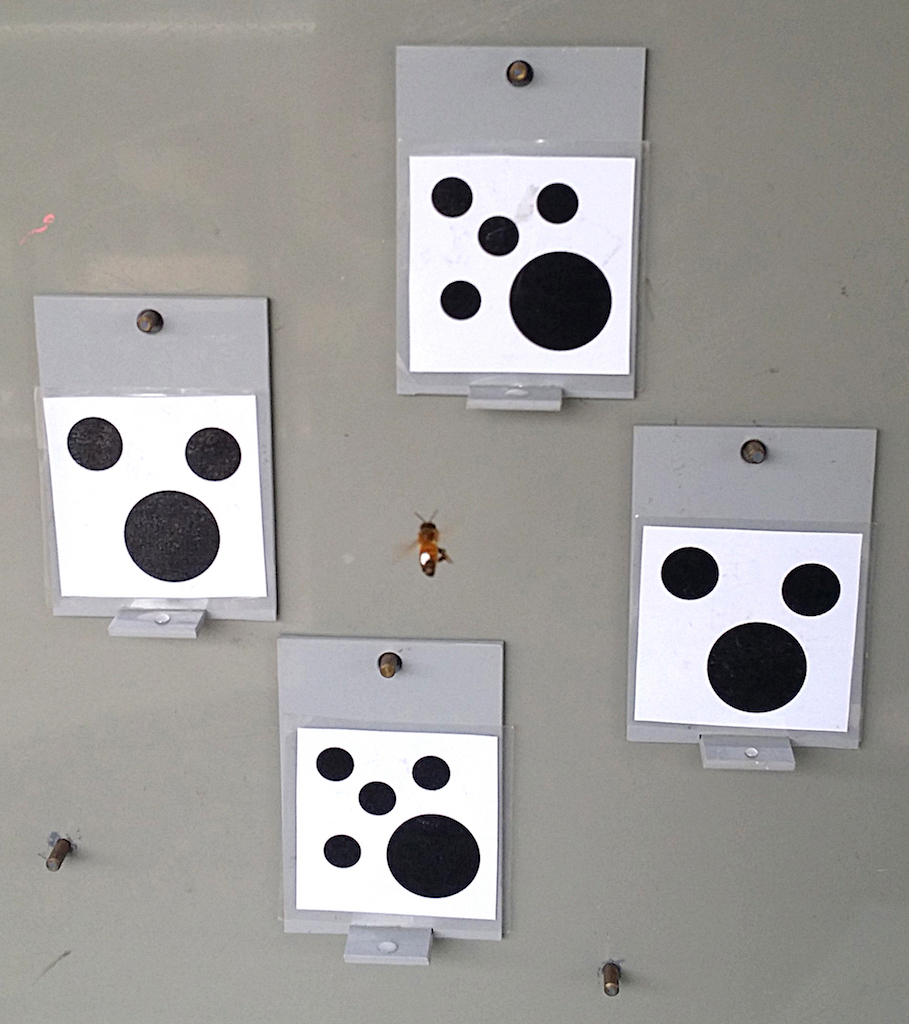Melbourne, Australia —(Map)
Scientists in Australia have shown that bees seem to understand the idea of zero. This is surprising since bees have very small brains. Up until now only a few animals with larger brains have shown this skill.
Zero means nothing. But for something so simple, zero is a hard idea to understand. Over 2,000 years ago, the Romans knew how to build machines, bridges, and huge buildings, but they didn’t have a zero in their number system.

(Source: Wikimedia Commons.)
So far, only a few animals, such as humans, dolphins, monkeys, and some birds have shown that they understand zero. And humans don’t usually understand it until they’re around four years old.
But bees are smarter than they look. Scientists already knew that bees could count up to four. They also knew that bees could “talk to” each other. By dancing in certain ways, bees can tell other bees how far away food is and in what direction.

(Source: Fir0002, from Wikimedia Commons.)
Scientists at RMIT University in Melbourne, Australia came up with a clever way to test whether honey bees understood the idea of “zero”.
First, they had to train the bees by rewarding them with sugar water for choosing smaller numbers.
The scientists hung up cards with different numbers of shapes, such as triangles or circles. Under each card was a small tray. The tray under the smaller number had sugar water. The tray under the larger number had something sour.

(Source:RMIT.)
After about 40 tests, the bees had learned to choose the cards with smaller numbers of shapes. The bees knew how to look at the cards, “count” the shapes on each card, and choose the card that had fewest shapes. Then came the interesting part.
The scientists put out a card with nothing on it – zero shapes. Even though they had never seen it before, the trained bees chose the blank card. This showed that they knew that zero, or “none”, was less than “some”.

The bees didn’t do this perfectly. They made some mistakes, especially when they were trying to decide between one shape and zero shapes. They did much better when they were choosing between many shapes and no shapes.
Just to be sure, the scientists also trained other bees to choose high numbers. Those bees did not choose zero.

Bees trained to choose higher numbers did not.
(Source:RMIT.)
Bees’ brains are about 86,000 times smaller than the brains of humans. How are they able to do so much with such a small brain?
The scientists still don’t understand how the bees were able to understand zero. But they are interested in studying bees more to try and find out.
Many people now are working on “artificial intelligence” – trying to create machines that can “think” using computers.
If the scientists can learn how the bees do so much with their simple brains, they may be able to use some of those ideas to improve artificial intelligence. Maybe then they can teach computers and robots some new tricks.
😕
This map has not been loaded because of your cookie choices. To view the content, you can accept 'Non-necessary' cookies.
